人教版(2019)选择性必修 第二册Unit 5 First AidProject课件(共20张)
文档属性
| 名称 | 人教版(2019)选择性必修 第二册Unit 5 First AidProject课件(共20张) | 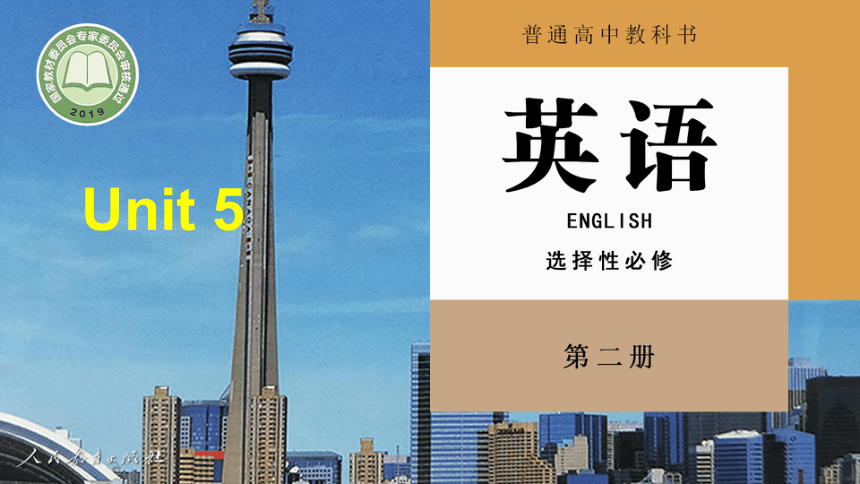 | |
| 格式 | zip | ||
| 文件大小 | 14.3MB | ||
| 资源类型 | 教案 | ||
| 版本资源 | 人教版(2019) | ||
| 科目 | 英语 | ||
| 更新时间 | 2022-09-05 22:28:07 | ||
图片预览



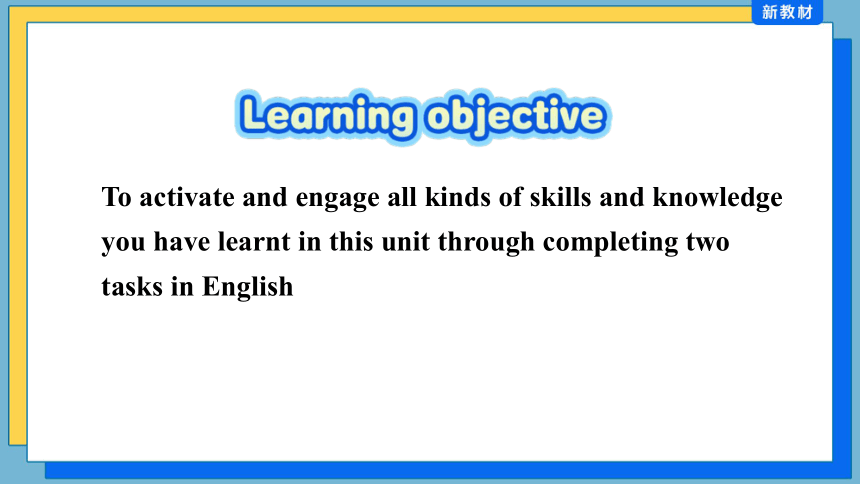
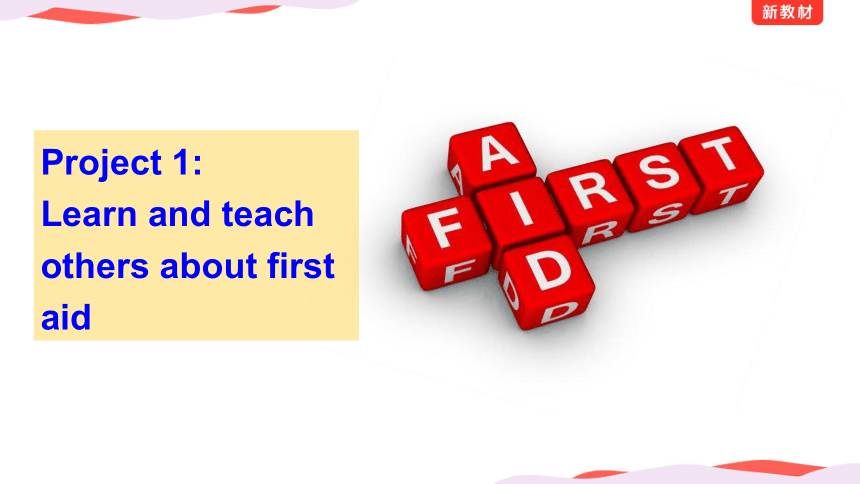
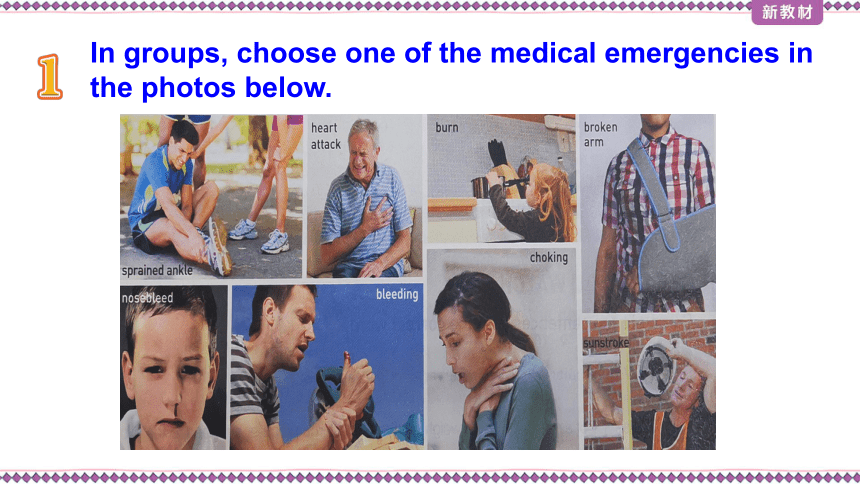

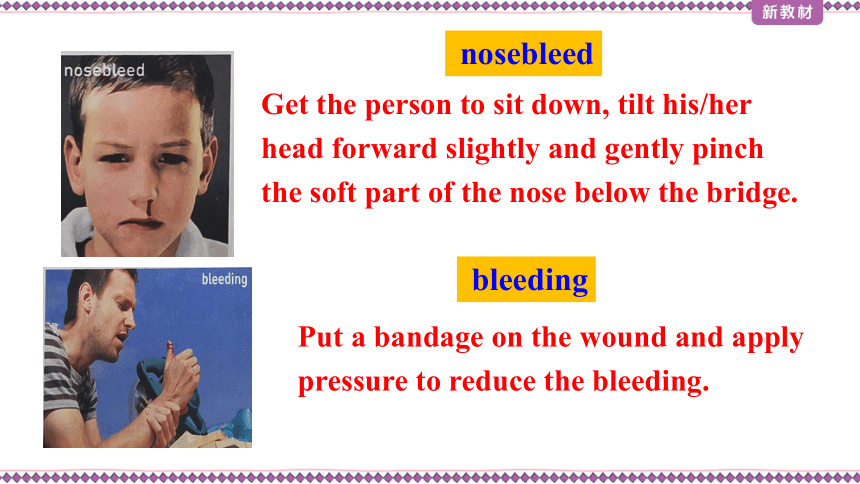
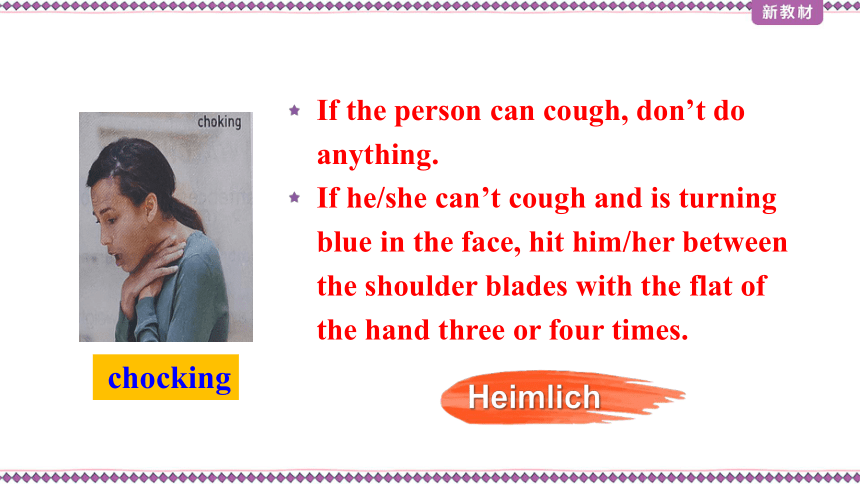
文档简介
(共20张PPT)
Unit 5
Unit 5
First Aid
To activate and engage all kinds of skills and knowledge you have learnt in this unit through completing two tasks in English
Project 1:
Learn and teach others about first aid
In groups, choose one of the medical emergencies in the photos below.
Research how to perform first aid for that medical emergency.
Have the victim sit down and elevate the foot.
Put an ice pack on the ankle to reduce the swelling.
Put a firm bandage around the foot and ankle.
sprained ankle
Get the person to sit down, tilt his/her head forward slightly and gently pinch the soft part of the nose below the bridge.
nosebleed
Put a bandage on the wound and apply pressure to reduce the bleeding.
bleeding
If the person can cough, don’t do anything.
If he/she can’t cough and is turning blue in the face, hit him/her between the shoulder blades with the flat of the hand three or four times.
chocking
Heimlich
Do not move the broken bone if possible. Do not move the victim.
Support the broken arm in the most comfortable position.
Keep the arm still using a sling or get the victim to support the broken arm with the other arm.
Get medical help immediately.
broken arm
Make an instruction leaflet for giving first aid for that emergency. Include illustrations for any points that are not clear.
Combine all the leaflets to make a first-aid manual for your class.
Project 2:
Make your own first-aid kit
With a partner, research what should be included in a first-aid kit, how the items in the first-aid kit should be used, and in which emergencies they should be used.
Collect the items and put them in a box or container that is easy to store and find. In most cases, the items for a first-aid kit can be bought cheaply at a pharmacy.
Draw up an information sheet to go in the first-aid kit. It should include emergency phone numbers, a list of the items, and an explanation of how to use the items. Use the table below to help you.
Emergency phone numbers Police: 110; Fire: 119 Ambulance: 120
Items When to use How to use
1 hydrogen peroxide or alcohol; gauze or cotton balls an open wound Use gauze or cotton balls to wipe the liquid over a wound in order to clean it.
2 bandages a small wound Cover a wound with a bandage.
3 antibiotic cream a small wound Apply it to a wound to stop infection.
Items When to use How to use
4 gauze; medical tape; scissors a large wound Cover a wound with gauze and then tape it securely to the body. If a wound is bleeding heavily, use gauze to press down on it until bleeding stops or help arrives.
5 plastic gloves when dealing with blood or dangerous fluids Put on gloves before offering first aid.
Items When to use How to use
6 aspirin heart attack Give one pill to someone suffering a mild heart attack.
7 pain reliever pain or fever Use it as directed on the bottle.
8 elastic bandages sprains or broken bones For an ankle sprain, wrap a bandage securely around the ankle for support and to hold down swelling. For a break, use a bandage to secure a splint to the arm or leg.
Items When to use How to use
9 First-aid manual to gain information on how to treat an injured person at the scene Refer to the contents page to find the relevant information for the situation.
Present your first-aid kit to the class. Introduce and explain the use of each item.
Unit 5
Unit 5
First Aid
To activate and engage all kinds of skills and knowledge you have learnt in this unit through completing two tasks in English
Project 1:
Learn and teach others about first aid
In groups, choose one of the medical emergencies in the photos below.
Research how to perform first aid for that medical emergency.
Have the victim sit down and elevate the foot.
Put an ice pack on the ankle to reduce the swelling.
Put a firm bandage around the foot and ankle.
sprained ankle
Get the person to sit down, tilt his/her head forward slightly and gently pinch the soft part of the nose below the bridge.
nosebleed
Put a bandage on the wound and apply pressure to reduce the bleeding.
bleeding
If the person can cough, don’t do anything.
If he/she can’t cough and is turning blue in the face, hit him/her between the shoulder blades with the flat of the hand three or four times.
chocking
Heimlich
Do not move the broken bone if possible. Do not move the victim.
Support the broken arm in the most comfortable position.
Keep the arm still using a sling or get the victim to support the broken arm with the other arm.
Get medical help immediately.
broken arm
Make an instruction leaflet for giving first aid for that emergency. Include illustrations for any points that are not clear.
Combine all the leaflets to make a first-aid manual for your class.
Project 2:
Make your own first-aid kit
With a partner, research what should be included in a first-aid kit, how the items in the first-aid kit should be used, and in which emergencies they should be used.
Collect the items and put them in a box or container that is easy to store and find. In most cases, the items for a first-aid kit can be bought cheaply at a pharmacy.
Draw up an information sheet to go in the first-aid kit. It should include emergency phone numbers, a list of the items, and an explanation of how to use the items. Use the table below to help you.
Emergency phone numbers Police: 110; Fire: 119 Ambulance: 120
Items When to use How to use
1 hydrogen peroxide or alcohol; gauze or cotton balls an open wound Use gauze or cotton balls to wipe the liquid over a wound in order to clean it.
2 bandages a small wound Cover a wound with a bandage.
3 antibiotic cream a small wound Apply it to a wound to stop infection.
Items When to use How to use
4 gauze; medical tape; scissors a large wound Cover a wound with gauze and then tape it securely to the body. If a wound is bleeding heavily, use gauze to press down on it until bleeding stops or help arrives.
5 plastic gloves when dealing with blood or dangerous fluids Put on gloves before offering first aid.
Items When to use How to use
6 aspirin heart attack Give one pill to someone suffering a mild heart attack.
7 pain reliever pain or fever Use it as directed on the bottle.
8 elastic bandages sprains or broken bones For an ankle sprain, wrap a bandage securely around the ankle for support and to hold down swelling. For a break, use a bandage to secure a splint to the arm or leg.
Items When to use How to use
9 First-aid manual to gain information on how to treat an injured person at the scene Refer to the contents page to find the relevant information for the situation.
Present your first-aid kit to the class. Introduce and explain the use of each item.
